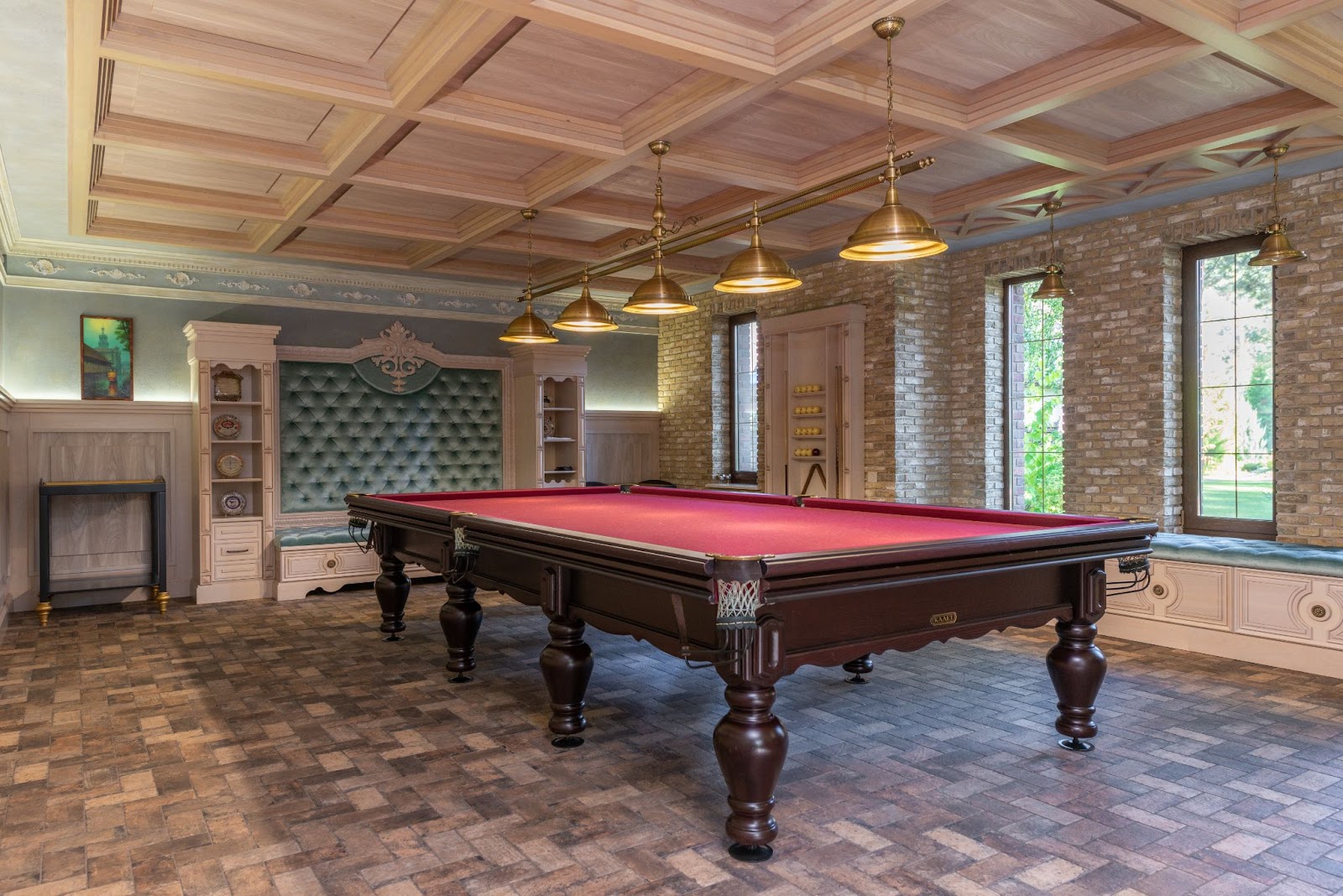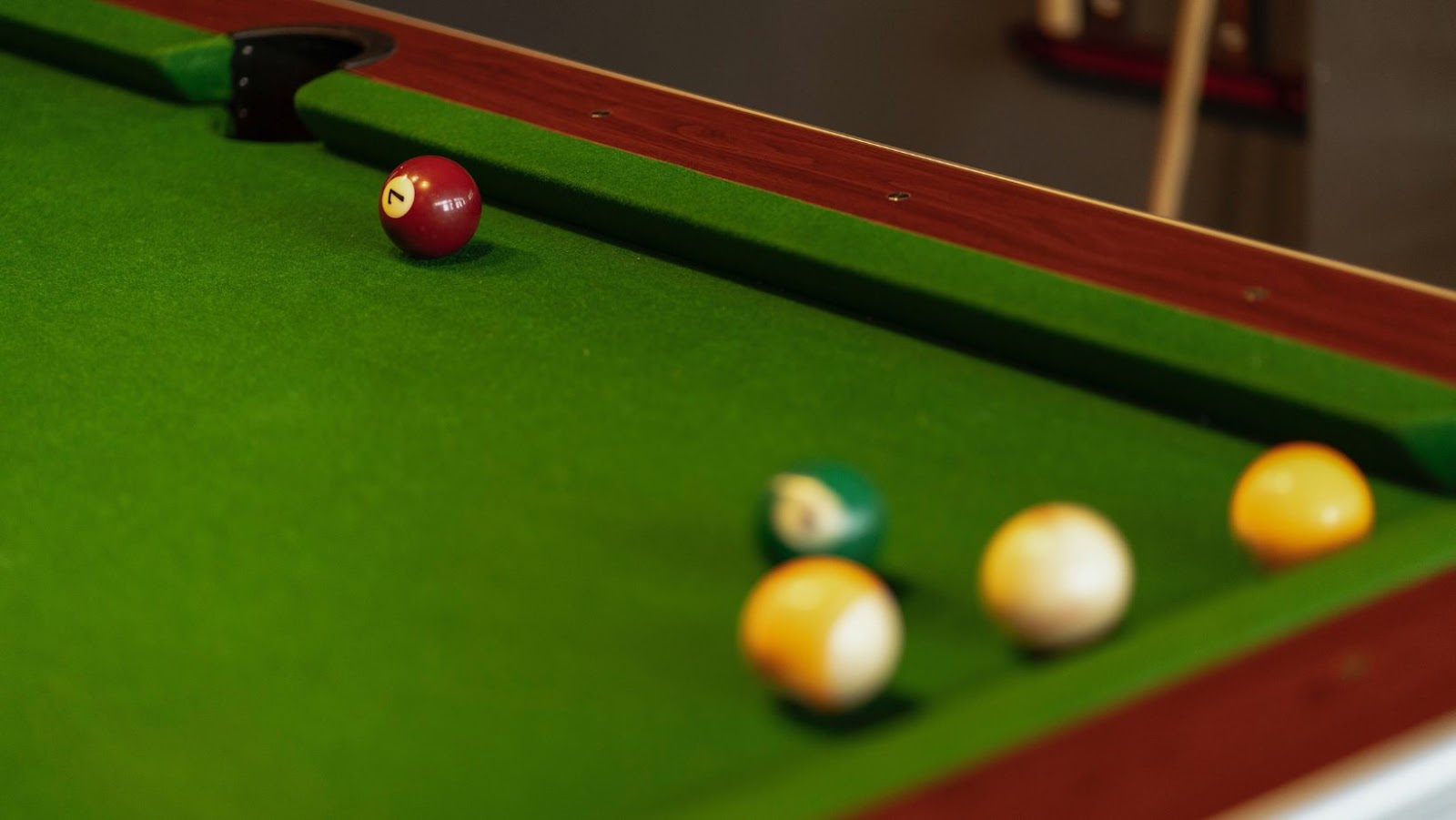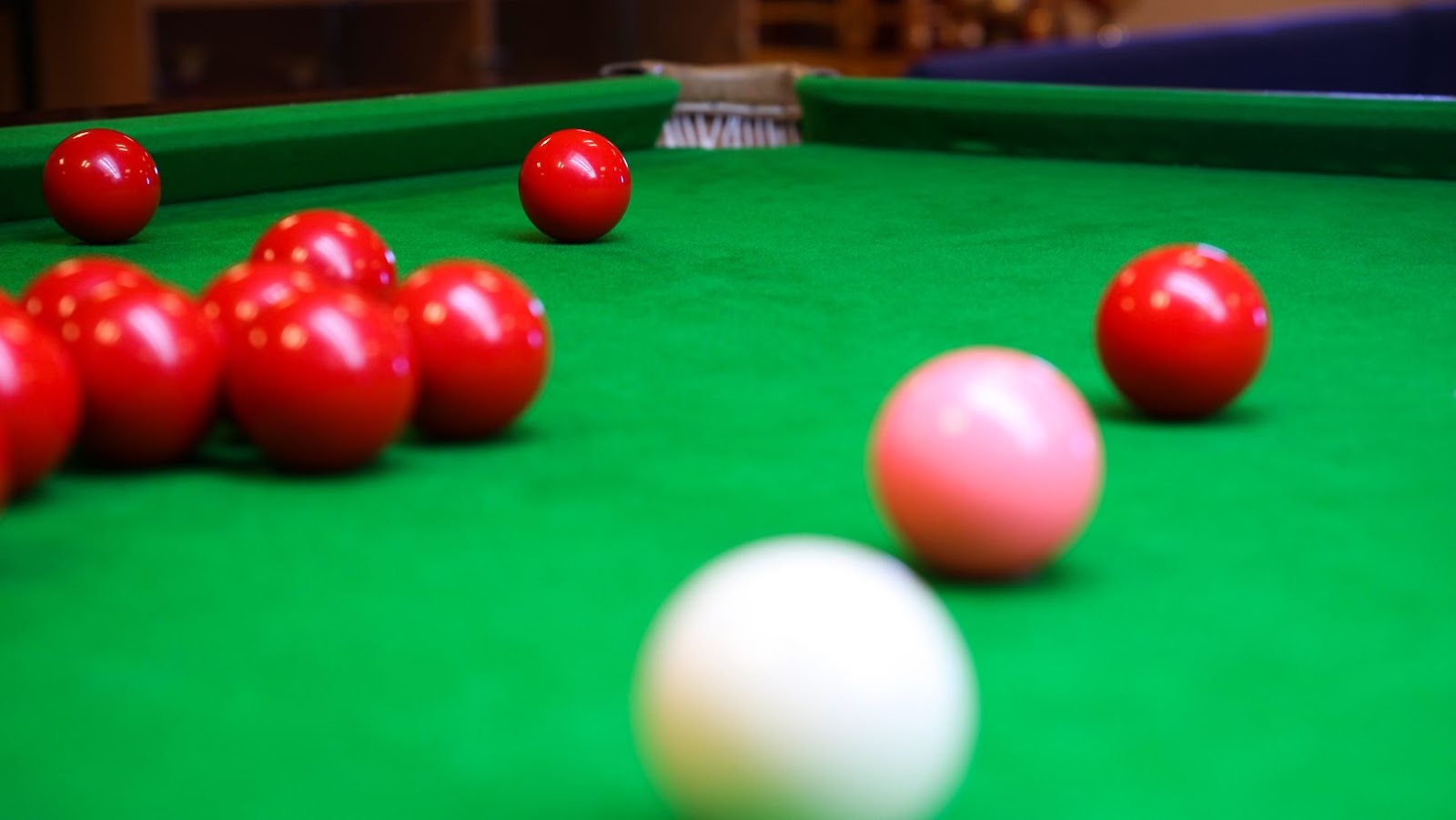Are you curious about the size of a snooker table? Do you wonder if it would be suitable for your house, or if you would need a spacious place to fit it?
This article will guide you through understanding the variations and dimensions of snooker tables so that you can decide the best size for yourself. Let’s get started and know how big these tables really are!
Introduction to Snooker Tables
Snooker is a popular form of billiards played on large tables with pockets around its edge. Snooker tables are larger than the traditional pool table and can be made from a variety of materials including wood and frameless slate. Although the size of snooker tables can vary depending on their use, they generally measure between 12ft (3.6m) to 14ft (4.3m) in length and 6ft (1.8m) to 7ft (2.1m) in width. The pockets are placed around the edge and should have an opening of 4 inches (10cm). The cushion is usually covered with Baize Cloth, which is available in various colors, as well as green being the most popular and traditional choice.
The standard height in snooker played among professionals until 1997 was 3 1/2 inches (9cm), but this has now been reduced to 3 1/4 inches (about 8cm). A modern snooker table will range between 2 ½ – 2 7/8 inches(6 – 7cm).
When buying pre-made snooker tables or slate beds, it is important to measure them properly before making a purchase decision so that you get one that meets your gaming needs perfectly.
History of Snooker Tables
Despite the fact that snooker is an ages-old game, it was only in 1883 that a standardized table size for the game of snooker was set for monetary play. As late as 1875, tables were any size up to 16 feet by 8 feet (4.9 m x 2.4 m). But since then, the size of a full-sized snooker table has been firmly set at 12 ft x 6 ft (3.7 m x 1.8 m). The very first official rules and regulations of snooker outlined the need for even legs and surfaced tables, with measurements stipulated in imperial English measurements (yards) rather than metric measurements. Yet soon enough these measurements became standard and were used worldwide by all official producers and manufacturers of full-sized professional quality competition tables – these are 12 ft by 6ft in length; or 496 inches long by 228 inches wide (12645 mm x 5801 mm).

The optimal playing height also follows official standards – each leg would have to be adjustable by 3 inches (76 mm), so that the table’s overall playing surface is between 28 and 31 inches off the ground (711–787 mm). The table surface must be entirely level with no more than a quarter inch tolerance adjacent to any pocket opening around the cushions; although this tolerance can be up to one inch if you consider overall theoretical differences between opposite sides of a partially ‘traffic ridden’ snooker hall used table – some fair allowance has to be taken into consideration for warpage or distorted warpages when made from composite materials as oppose to solid mahogany frames or natural woods with veneer surface complete with banded rails etc.
Types of Snooker Tables
Snooker tables come in a variety of sizes, usually determined by the type of professional tournament or recreational play. The World Snooker Association (WSA) enforces strict regulations on the size and playing area configurations for international tournaments, while smaller sizes are often preferred in recreational settings. Understanding the differences between table types and their dimensions will help you determine what type of snooker table is suitable for you.
Full-size snooker tables: These tables are 12 feet long by 6 feet wide and have a playing area that is 11 feet 8 1/4 inches by 5 feet 10 inches. Under WSA regulations, all pocket openings must be between 4 3/16 inches to 4 7/16 inches in diameter and the cushions should be 12 to 14 millimeters thick along the top rail.
Smaller snooker tables: Commonly referred to as “club” size or “bar” size, these smaller tables measure 10 feet long by 5 foot wide with a playing surface of 9 foot 10 1/2 inches by 5 foot 2 1/2 inches. The pocket openings must be between 3 5/8 inch to 3 7/8 inch in diameter and must have 6 1/2 millimeter thick cushions along the top rail.
English devonshire snooker tables: Men sho longer than “full-size” or “club” snookers, English Devonshire Snookers, common among pubs in England feature an elongated table measuring 13 feet long by 6ft wide with half length pockets (10 to 12 mm). Pocket openings are slightly bigger than European standard models at 4 ½ -4 ¾ inch with 8mm cushion rubbers at either side of the pocket entrance for optimum rebound properties.
Miniature or novelty snooker tables: Usually found as gift items or decorations; these miniature replicas vary in dimension from 2ft up to 4ft. They feature very small holes instead of pockets making shots impossible but are great as toys an interactive display pieces.
Factors Affecting The Size of Snooker Tables
Snooker tables vary in size depending on the type of game being played and the number of players. Professional tables used in competitions and clubs are usually 12 feet (3.66 m) long and 6 feet (1.83 m) wide, while smaller sized tables, designed for pubs or home entertainment, may be as small as 7 feet (2.13 m). The size of a snooker table is tightly regulated by the World Professional Billiards and Snooker Association (WPBSA). According to their regulations, a standard professional table must measure 12 ft x 6 ft with a playing surface measuring 11 ft 8½ inches x 5 ft 10 inches with a 5″ gap around all four sides of the cushion woodwork to complete the exterior dimensions. There must also be a 2 inch gap between edges of cushions too. All cushions must make an angle of at least 90° to the surface plan when the cue ball is placed on its spot on or near the centre spot that marks it out clearly from any other ball on the table. The cushion nose should also come up roughly 1¼ inches above bed level to ensure consistent playability throughout play.
Other factors also affect size, including match rules such as how many frames players need to win before succeeding in clinching a frame (commonly 4 frames) or what equipment is used during play – such as larger pocket openings & thicker cushions making for more tactical shots which require greater positional accuracy from competitors due to increased rebound angles when using spin shots whilst playing snooker on comparatively smaller domestic sized tables compared with highly competitive tournament sizes found in professional level matches around today’s world.
How Big Are Snooker Tables
Snooker tables come in a variety of sizes and specifications, although there are two main types—the traditional full-size table, and the smaller “pub” or compact snooker table. This guide will explain the various dimensions of both standard snooker tables and compact/pub tables, which can help you choose the right size table for your home or venue.
Full-Size Snooker Tables: Traditionally, full-size snooker tables measure 12 feet by 6 feet (12′ x 6′), with a playing area of 11 feet by 5.5′ (11′ x 5½’). These tables must have sides of at least 27″ in height, and legs at least 31.5″ tall to be compliant with professional snooker tournament specifications.
Compact Snooker Tables: Pub or compact snooker tables generally measure 9 feet by 4.5 ft (9′ x 4½’), with a playing area of 8feet 2 inches by 4feet (8’2”x4’). Unlike full-scale professional tables, these models typically feature folding legs for easy transportation and storage. Alternatives to these standard sizes can also be found — ranging from 7 feet all the way up to 12 feet in length — so it’s important to check before you buy that the model fits your needs.
Professional Snooker Table Sizes
Professional snooker tables come in a standard size of 12 feet by 6 feet and are used in tournament play all over the world. The surface, known as the cloth, is usually made from a blend of wool and nylon to create a smooth, uniform playing surface. The pockets are usually made from hard leather and have a diameter of six inches across. On each corner of the table you will find half-moon pockets cut into the rail cushions that accept balls that need to be replaced. The height from floor to rail is also regulation with five-eighths to three-quarters inches being standard for professional play.

In order for players to be able to accurately gauge their shots, measuring strings run parallel along both sides of the table and perpendicular across each side at both Baulk lines with marks placed every 5 centimeters (two inches). These strings allow referees or spectators to determine whether a ball came close enough to the pocket before approaching it fully.
The snooker balls themselves come in two different sizes – 2 3/16th inches (57mm) used primarily at amateur level and 2 1/16thinches (51mm) which is used on professional grade equipment like television tournaments or international events.
Benefits of Playing on Different Sized Snooker Tables
Playing on different sized snooker tables can present unique challenges and offers a range of benefits. Tables come in a variety of sizes, from full size (12-foot) professional style tables that are standard in tournament venues, to smaller 6- or 8-foot models that are designed for home and recreational use. The full size snooker table offers a wider range of angles for shots and selection of shots, as well as longer pockets; this adds more elements of strategy into play and requires more elite skills for complete control over the table. On the other hand, using a smaller sized snooker table is a chance to hone some basic skills with less strategy involved. For example, playing on an 8-foot snooker table will give players the chance to work on their control over shorter shots due to the shorter pockets which will help with their accuracy across any size table.
In addition to working on both short and long game skills, playing on different sizes also presents an opportunity to practice cue ball control between shots at potential tight angles by means of moving your cue ball around other balls in small spaces; this is something especially integral when practicing offensive or defensive moves in free form Snooker (or Snooker Plus) where you can play specific balls following potting one off its spot.
It’s important not just to consider the pure enjoyment aspect that comes with playing on different sized tables; ultimately it will help refine those all important skills necessary for aggressive play across any type of Snooker game – whether it’s at elite level or not!
In conclusion, Snooker tables come in a variety of sizes. Full size snooker tables measure 11 feet by 5.5 feet, while smaller varieties such as table-top or midi snooker start at just under 4 feet long and range up to 7 feet.
With the right space, almost any size table can provide hours of fun and enjoyment for players of all ages and levels of experience. Additionally, the availability of modern materials such as foam backed cloth and anti-sliding cushions help to create a level playing surface for professional tournaments and social Snooker events alike.
Ultimately, whatever type or size you choose, time spent on a Snooker table always provides an enjoyable pastime that can be shared with family or friends.
